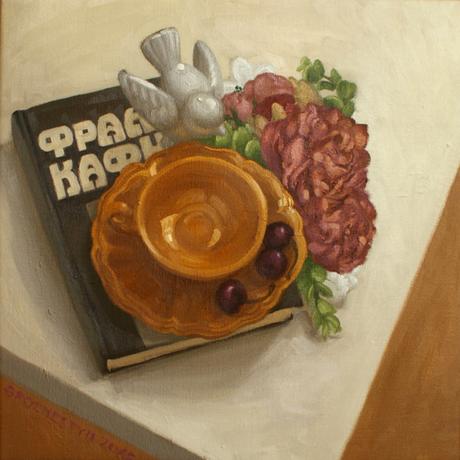
Tea and sympathy (c) Samantha Groenestyn (oil on linen)
The eighteenth-century German philosopher Johann Gottfried Herder penned some truly delightful thoughts on Sculpture that make my fingers itch to knead and shape wax or clay. His observations, dripping with unexpected warmth and vitality, dip and meander through many themes, some more credible to our modern intelligence than others.
Sight and touch, he begins without delay, are fundamentally distinct, and we stand to gain very much by teasing them apart (Herder 2002: 33). Not least, we might gain a deeper understanding of beauty, a heavily sight-oriented notion (Herder 2002: 39). Touch demands something more solid of beauty than does sight, something more connected to purpose and to strong and healthy forms than to the shimmering and retreating effects of light. Touch searches out truth. This truth grounds us in the world of physical bodies, of living beings and of complete forms, discoverable even in the dark. ‘The dark of night’ even comes to the aid of our sense of touch: ‘with its sponge it removes all the colours from things and obliges us to attend to the presence and existence of an object’ (Herder 2002: 81).
Leave it to the other arts, urges Herder, to chase after ‘breath and speech,’ after the breeze that animates hair and drapery, after ‘the fugitive butterfly of wit and abstraction’ (Herder 2002: 97). Sculpture, like the very stone or wood or clay from which it is formed, is too weighty for such preoccupations—lovely though they are. ‘For this the statue is too true, too complete, too unified, too sacred’ (Herder 2002: 97). Let us touch on each in turn.
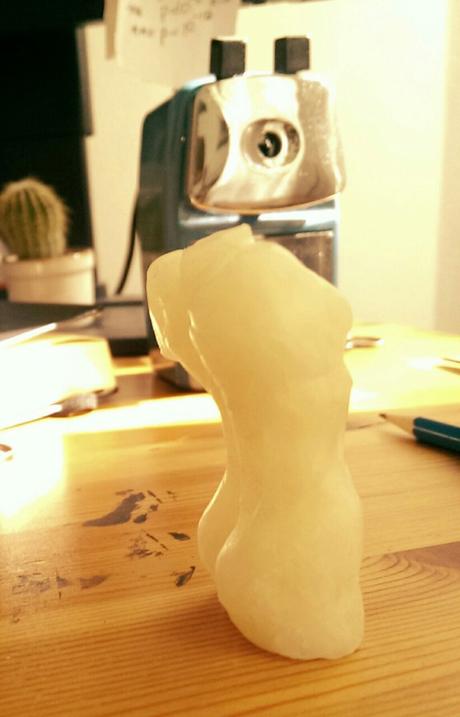
Copy after Rodin in wax
Too true
While sight allows us to swiftly estimate beauty, it only permits us to assess a surface, as it were. The physical world, as delivered to us by sight, is far more comparable to a flat picture than we commonly admit: sight gives us shapes, and only the ones revealed by light: we see but ‘a continuum of things placed alongside one another’ (Herder 2002: 35, 36). If we have learned to see bodies, to understand that they occupy space, that they consist in a substantial volume that is not at all times present to our eyes, we have learned to supplement our sight with touch, argues Herder (2002: 40): this ‘is not something we can learn through sight.’ It is merely that since childhood we have quickly learned to use these ‘sister’ senses together, such that they have all but fused together in a seamless partnership (Herder 2002: 39).
Sight affords us many excellent things, of course. What is present before our eyes is perceivable in an instant, and does not die away as do sounds. Because of this, Herder describes sight as the most philosophical of the senses, if the most artificial; it coaxes us into meditation and contemplation (Herder 2002: 39).
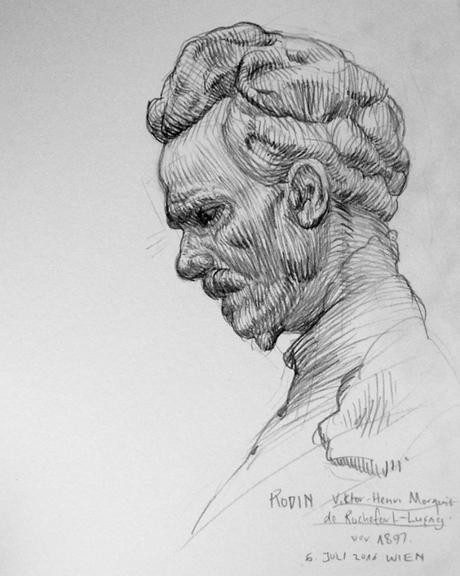
‘Sight gives us dreams, touch gives us truth’ (Herder 2002: 38). The more we concentrate on the surface features of an object, on the shapes revealed to us by light, on the flattened field before us obscured by roving shadows, the less attentive we are to the physical body before us (Herder 2002: 81). ‘It is remarkable how rarely a person appears to us,’ he (2002: 82) writes, ‘that someone embraces another person and holds him in such affection that he carries the person with him and gives him eternal existence.’ Touch uncovers the object, the person before us, by revealing to us how she consumes space, how her masses flow into each other, how they integrate and how they jointly operate. Light glancing off a shoulder tells us nothing of the fleshy functioning of the shoulder girdle, nothing of the astonishing flexibility of the clavicle, nothing of the tensing and softening machinations of the pulsing and breathing body before us. Touch gives us our first shocking awareness of substance.
And once we admit something substantial into our presence, we are able to inhabit that other form, as it were: ‘inner sympathy alone, feeling and the transposition of our entire human self into the figure we touch, is the true teacher and instrument of beauty’ (Herder 2002: 78). Observation is not enough, insists Herder (2002: 79; 81); we must also exist and feel in order to approach truth.
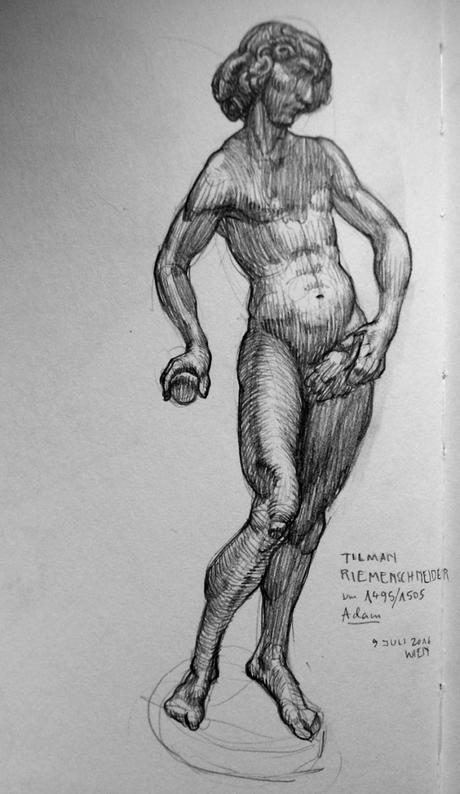
Too complete
Herder summons the Greeks and their arguably unsurpassed sculpture to demonstrate the strength of the whole in sculpture. The soul ‘expresses itself through the entire body,’ (Herder 2002: 79; 81) and each feature, each limb, each mass, each connecting joint displays the bearing of a person, all united to honestly convey something about the inner workings of that person. And conventions play no part here, Herder insists. Beauty consists in inner perfection, betrayed by the completeness of body (Herder 2002: 77):
‘The sublimity and beauty of the human body, whatever form it may take, is always an expression of health, life, strength and well-being in every limb of this artful creature.’
Herder takes us on a sensuous tour of the expressive parts of the body, describing how each reveals some inner truth about the person before us. Some suggestions are rather fanciful, but others quite profound, no less for an artist, who, in learning to construct the body, finds that no part exists in isolation. Even the humble foot, far from being a simple load-bearing base for the body, is ‘animated through to its smallest parts.’ The dedicated student of anatomy will attest that one does not simply learn to draw a foot, but ever thinks of how the block of the ankle, though quite distinct, flows seamlessly from the tibia into the prism of the foot; how the outer bump of the ankle is none other than the end of the fibula which stretches inflexibly up to the knee, where the hamstrings—some crossing two joints, reaching down from the pelvis—latch on to it. Our divisions are arbitrary: the foot ‘is not detached from the rest of the body and pulled on as if it were the shoe of a worm, but is one with the whole, which flows into it and is supported by it’ (Herder 2002: 75).
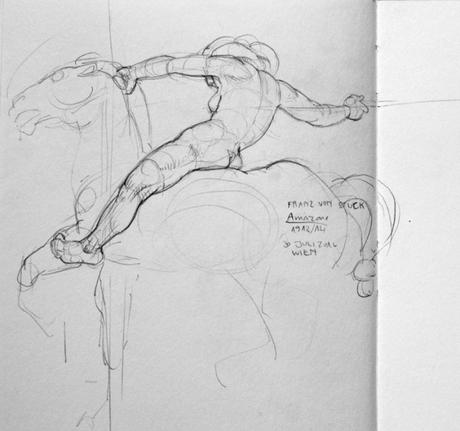
Too unified
Painting has opportunity to explore abstractions, ideas, relations and stories, but sculpture, Herder argues, is not only too direct for such preoccupations, but is too pared-back and concrete. Sculpture gives us the person as a unified whole, divested of complex relations and extraneous props and setting. ‘It is never abstract love that stands before us, but the god or the goddess of love’—‘a single ensouled whole’ (Herder 2002: 97; 100). Sculpture suffers when it ventures into allegory, into weak and faceless ideals; it grows in strength when it presents a real, grieving woman to us rather than a vague and anonymous Pietà. Sculpture cannot cope with ‘the butterflies of wit and meaning,’ with the divisive interplay of multiple personalities in a group (necessary to depict a story), which rend the form with jarring wedges of air (Herder 2002: 100, 101).
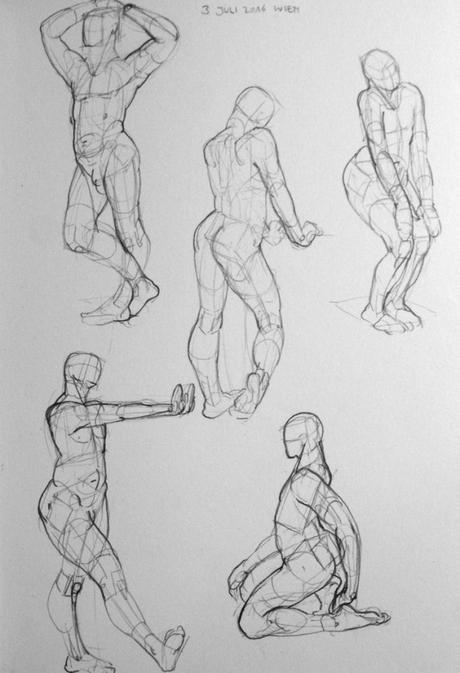
And in more formal terms, a sculpture is unified in its independence, in its fierce solitariness. Herder (2002: 93) beautifully asserts:
‘A statue does not stand in light, it creates its own light; a statue is not placed in space, it creates its own space. … Sculpture does not possess a viewpoint: it explores everything in the dark, following the shape of limbs and forms.’
Too sacred
We sensuous human beings are so susceptible to touch. But a gravity accompanies sculpture, where a picture would stir our easily aroused imaginations. The truth embodied in sculpture, argues Herder (2002: 92), must encourage the graver failing of idolatry. An imposing physical form comes alive in still and solemn moments, in darkened and deserted rooms; ‘the daemon that animate[s] it [is] also present to the senses.’ Faced with such seductive, convincing, powerful forms, we must decide ‘either to pray to them or to destroy them.’
Though, Herder (2002: 92) notes, this spell does not last forever. The Italians’ long cohabitation with sculpture demonstrates the inevitable decline of art: ‘their extreme and exalted feeling would, with time, have resolved itself into art; art would have resolved itself into taste; and taste into disgust and neglect.’
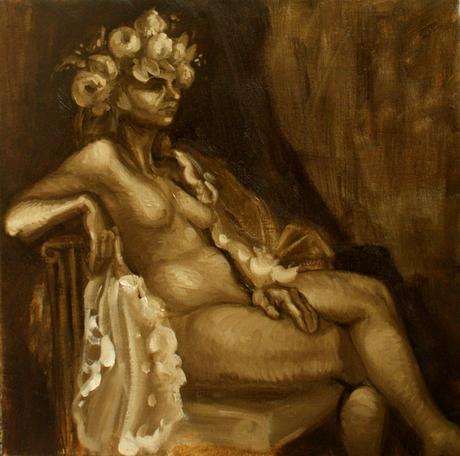
Alex as statue (oil on linen–grisaille)
Sight and touch, so often united, pull us in different directions. Sight is ever quick to carry us away, to adapt to new conditions of light, to new arrangements of color and shape, to stimulate our fancy by seductive paint or by gleaming pixels, or by the very play of light rays reflecting off the natural world as if it too were nothing but a flat panel, a high-resolution display. Touch is simultaneously solemn and seductive; it returns us to the flesh, it grounds us, it makes us press ourselves up against truth. Painting is a playground for imagination; sculpture is the art form that ‘is able to hold us fast to substance and to reality’ (Herder 2002: 98). Should we accept such a distinction, we would have access to a deeper kind of beauty anchored in substance—in health, in content, in function, in truth—rather than appearances.
Herder, Johann Gottfried. 2002 [1778]. Sculpture : Some Observations On Shape And Form From Pygmalion’s Creative Dream. Translated by Jason Gaiger. Chicago: University of Chicago.

